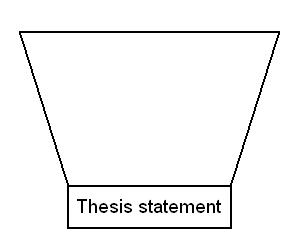Essay introduction
The introduction to an essay has three primary objectives:
- Explain the context of the essay
- Give the answer: the response to the question or the overall focus of the essay (the thesis statement)
- Describe the structure and organisation of the essay
These aims can be given more or less emphasis depending on the length and type of essay. In a very short essay (less than 1000 words), for example, there is not much room to give a full and detailed context or structure. A longer essay has room for greater detail.
Context
Essays are usually written for an intelligent but uninformed audience, so begin with some context: the background of the topic, the topic scope, and any essential definitions.
- Introductions often begin with a broad opening statement that establishes the subject matter and background. Don't make it too broad (“Since time began…”), but identify the relevant topic and sub-topic (e.g. human resource management, early childhood development, animal behaviour…).
- To establish the scope, answer basic questions: Who? What? When? Where? How? Why? Is the essay limited to a particular time period, a particular group of people, a particular country?
- Definitions are often established after the introduction, so only include them here if they are absolutely essential.
Answer / focus
The most important part of the introduction is the response to the question: the thesis statement. Thesis statements are discussed in detail here: thesis statements.
An introduction often ends on the thesis statement. It begins with a broad statement and gradually narrows down until it directly addresses the question:

This order of introduction elements is not set in stone, however. Sometimes the thesis statement is followed by a breakdown of the essay's structure and organisation. Ultimately, you must adapt the order to suit the needs of each particular essay.
Structure
Strong introductions tell the reader how the upcoming body paragraphs will be organised.
This can be as easy as outlining the major points that your essay will make on the way to the conclusion. You don't need to go into much detail in the introduction: just signal the major ‘landmarks.’
It can help to identify how all of the paragraphs are organised:
- Do the paragraphs deal with the issue from earliest to most recent (chronological)?
- Are the paragraphs grouped by broader themes (thematic)?
- Does the essay answer several related questions one after the other (sequential)?
- Do the paragraphs describe two elements and them compare them (contrasting)?
The essay will be much more readable once the reader knows what to expect from the body paragraphs.
Introduction examples
See sample essay 1 and sample essay 2 for model introductions.
